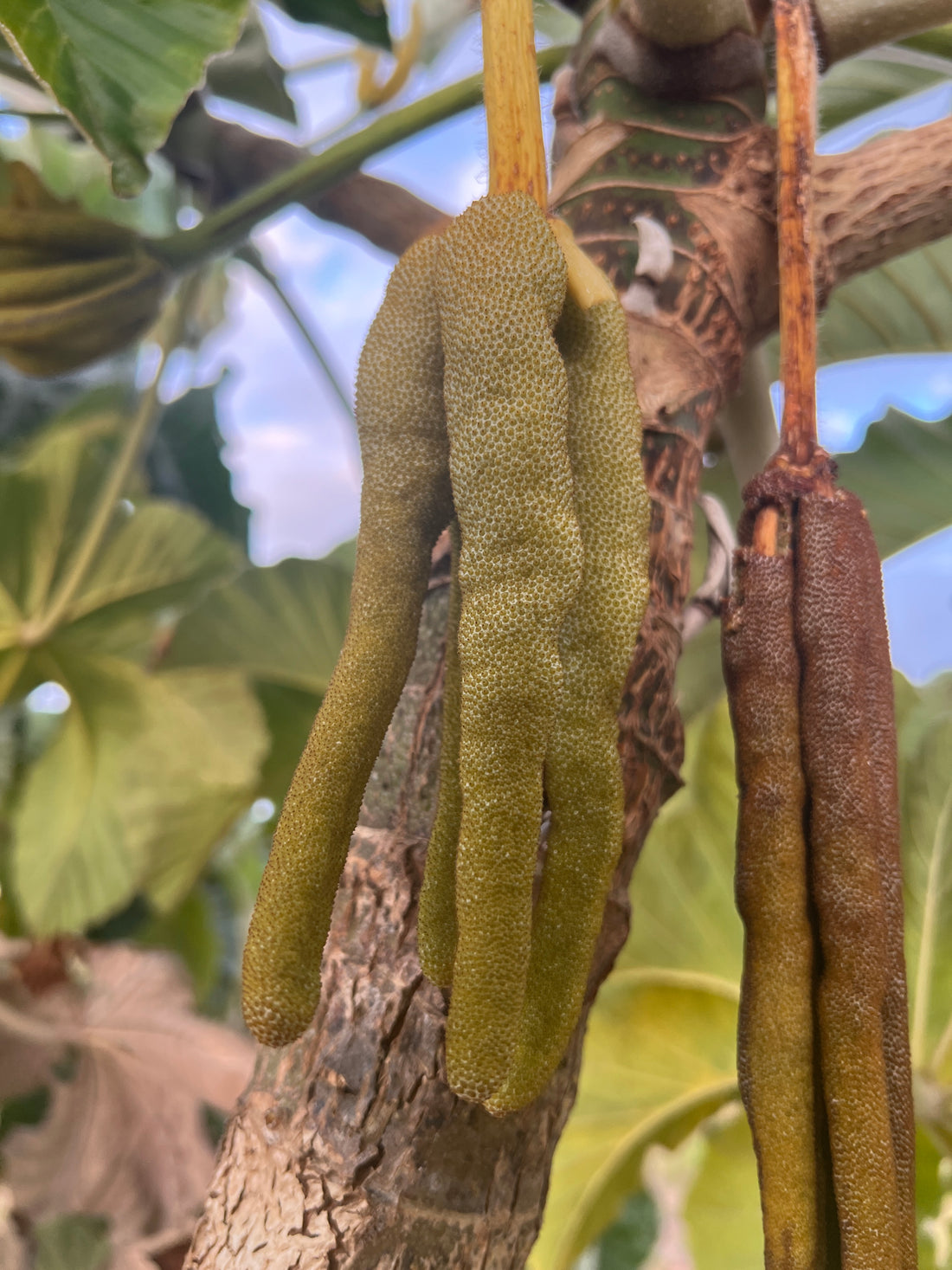The Cecropia genus, often referred to as the gummy worm fruit, is a fascinating group of trees native to the tropical regions of the Americas. Renowned for their unique fruit and ecological importance, Cecropia trees have played a significant role in the cultures and ecosystems of Central and South America.
Origin and History
Cecropia trees are primarily found in the tropical rainforests of Central and South America, with a range extending from Mexico to Brazil. These fast-growing trees are often among the first to colonize cleared or disturbed areas, making them a key component of secondary forest growth. Historically, indigenous peoples have utilized various parts of the Cecropia tree for food, medicine, and other practical purposes.
Cultural Uses
The gummy worm fruit, or Cecropia fruit, holds considerable cultural significance in the regions where it grows. Indigenous communities have long harvested the fruit for its sweet, edible pulp, which is enjoyed fresh or used in various culinary preparations. The fruit is often described as tasting similar to mulberries or figs, with a hint of sweetness and a slightly chewy texture, which gives it its nickname.
Beyond its use as a food source, Cecropia has medicinal applications. Traditional medicine practices utilize the leaves, bark, and latex of the tree to treat ailments such as asthma, hypertension, and infections. The tree’s young leaves are sometimes used to make a medicinal tea believed to have anti-inflammatory and analgesic properties.
Taste and Description of Fruits
Cecropia fruits are distinctive and eye-catching. They resemble elongated, greenish worms or caterpillars, hence the nickname "gummy worm fruit." When ripe, the fruits turn a darker color and become softer. The interior pulp is sweet and slightly chewy, similar to the texture of a gummy candy. This unique texture and taste make the fruit a popular treat among locals, especially children.
Nutritional and Health Benefits
Cecropia fruits are not only tasty but also nutritious. They contain essential vitamins and minerals, including vitamin C, calcium, and potassium. These nutrients contribute to various health benefits, such as boosting the immune system, supporting bone health, and maintaining electrolyte balance. Additionally, the fruits are high in dietary fiber, which aids in digestion.
Environmental Importance
Cecropia trees are crucial to tropical ecosystems. They provide habitat and food for a variety of wildlife, including birds, bats, and insects. The trees’ rapid growth and ability to thrive in disturbed areas make them essential for reforestation and ecological restoration projects. Furthermore, Cecropia trees have a symbiotic relationship with certain ant species, which protect the tree from herbivores in exchange for shelter and food, illustrating a fascinating example of mutualism in nature.
Conclusion
The Cecropia fruit, or gummy worm fruit, is a remarkable product of the tropical rainforests of Central and South America. With its unique appearance, sweet taste, and nutritional benefits, it is cherished by indigenous communities and wildlife alike. The tree’s rapid growth and ecological significance underscore its importance in both cultural traditions and environmental sustainability.
Keywords:
- Cecropia fruit
- Gummy worm fruit
- Tropical rainforests
- Central and South America
- Indigenous cultures
- Traditional medicine
- Nutritional benefits
- Ecological importance
- Reforestation
- Mutualism
Exploring the Cecropia fruit reveals a rich tapestry of cultural practices, ecological interactions, and nutritional value, highlighting the diverse ways in which this unique fruit enriches both human and natural communities.

